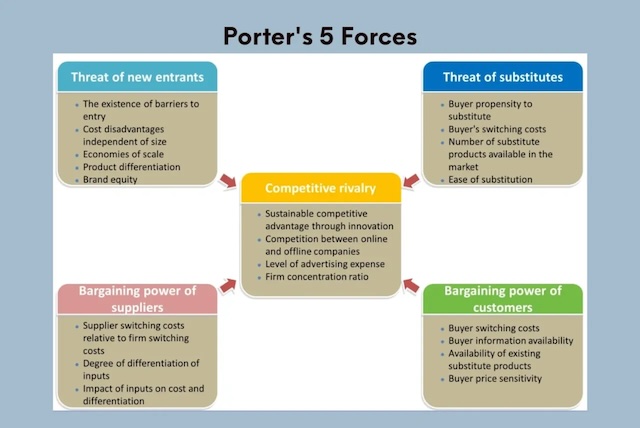There is little chance to avoid competition in the marketplace. Companies confident in their abilities and willing to take risks can come out ahead. To have the edge over competitors and increase your company’s chances of success, it’s essential to understand how the competitive environment impacts your business. The theory of Porter’s 5 Forces is a valuable tool for any product professional planning to enter a different industry or launch a new product. Porter’s 5 Forces analysis is based on a framework developed by Michael Porter in his book, “Competitive Strategy: Techniques for Analyzing Industries and Competitors” in 1980. This article will reintroduce Porter’s 5 Forces model and why it is still relevant for anyone who wants to succeed in business.
What is the Porter’s 5 Forces Model?
In a nutshell, Porter’s 5 Forces is a business analysis framework used to assess the competitive environment in which a company operates. The framework identifies five forces likely to shape the business environment and the company’s competitive strategy.
These 5 Forces are:
1. The competitive rivalry or the intensity of competition in the marketplace
2. The threat of new entrants into the marketplace
3. The threat of substitute products
4. The bargaining power of suppliers
5. The bargaining power of customers
The model helps us understand the organization’s external environment by identifying the threats and opportunities in the marketplace. It also helps us determine how the organization can strategically react to these forces to enhance profitability.
Understanding the Basics of Porter’s 5 Forces
Competitive rivalry – It refers to the intensity of competition in the marketplace. The higher the number of rivals in the marketplace, the higher the intensity of competition and, therefore, the greater the pressure to perform.
The threat of new entrants – New companies may look at entering the marketplace as an opportunity to get a piece of the action. If an industry is profitable, new companies will enter the field and increase competition.
The threat of substitute products – Substitute products are products that can be used in place of the company’s product. Substitutes can be both services and products from other companies.
The bargaining power of suppliers – Suppliers are the companies that provide the inputs needed to run the company’s business.
The bargaining power of customers – Customers are the individuals or organizations that use the company’s product or service.
Why is Porter’s 5 Forces Analysis Important?
This model is based on the insight that businesses thrive on the ability to earn more than their competitors. The 5 Forces are interrelated and affect each other. For example, the threat of new entrants will depend on the intensity of the competition. The advantage of doing a 5 Forces analysis is that it gives you a broad overview of the external factors that can impact your business. This insight will allow you to make strategic decisions as you build your business. It is an excellent practice to do a 5 Forces analysis annually to help you stay up-to-date with the latest trends in your industry.
Final Words
Porter’s 5 Forces model can help you understand the competitive landscape of any industry, which is helpful if you’re creating a new product or entering a new industry. When you know the competitive landscape, you can see where there is an opportunity for growth and where there is not. This will help you make better decisions about where to spend your time and effort and give you a better chance of succeeding. This model is a valuable tool for any business, but it’s important to remember that a model is just a tool. It can’t tell you anything meaningful about your business if you do not engage with it, interpret the results, and use them to inform your strategy.

